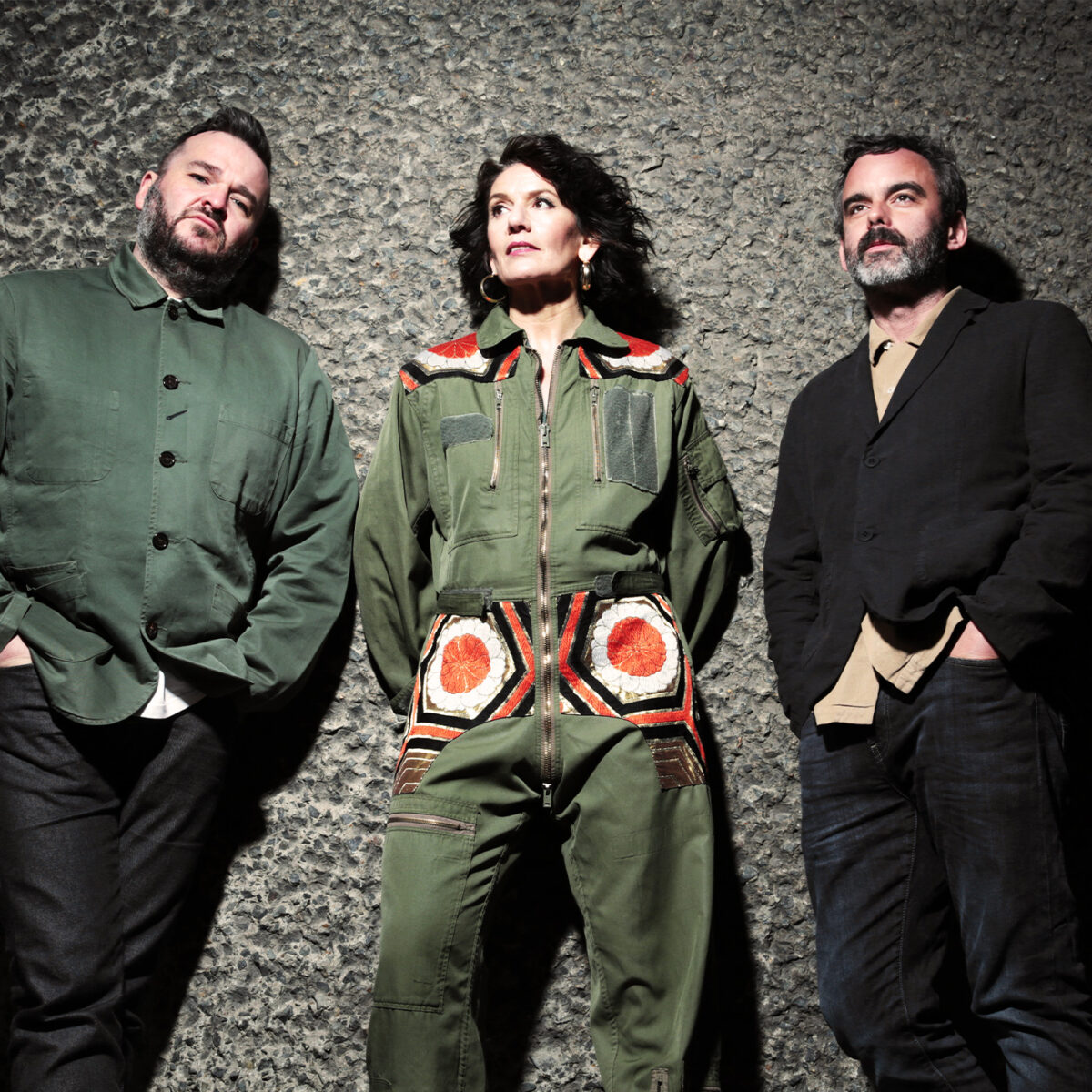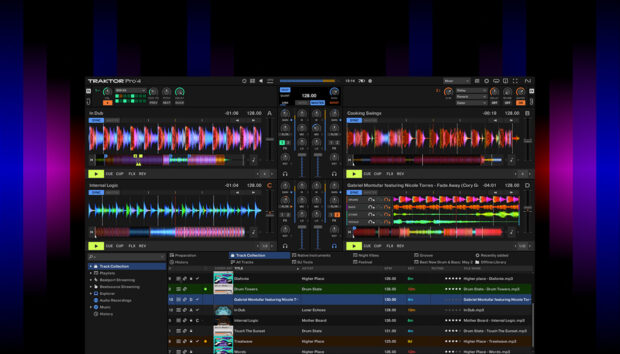
Songwriting can be an amazing career choice, but like any creative pursuit it needs to be nurtured and practiced. Below, we’ve asked some top industry pros to share their essential songwriting tips to help motivate and inspire you into action!
Whether working alongside others or alone, every songwriter goes through periods where their imagination fails them, from writing lyrics and melodies to struggling on how to structure and arrange a track or suffering from writer’s block.
Here we invite a cast of industry pros to provide some songwriting help for your imagination and empower you to break out of those creative ruts.
Here’s an introduction to our selection of amazing contributors who are sharing their tips for writing a song:
Kolidescopes: The duo of Dan Dare and Yeah Boy (Johnny Courtidis), Dare has produced hits for the likes of Charlie XCX, Wiley and Marina and the Diamonds, while co-writer Yeah Boy has attained platinum record sales with his indie house band Parachute Youth.
Charli Taft: Multi-faceted singer/songwriter Charli Taft is one of the most credible new voices in R&B today, having crafted hit records for the likes of Red Velvet, EXO and SuperM and worked alongside A-list producers including Teddy Riley (Janet Jackson) and Louis Bell (Justin Bieber).
Steve Mac: A scratch DJ from the age of 11, Steve Mac is a UK DJ, producer and label boss of ‘Jack Said What’ records. Famed for his analogue production style, Mac is also one half of the famed DJ duo the Rhythm Masters and has remixed for Jamiroquai, Charlotte Church and Simply Red.
Ultra Naté: Baltimore-based music icon Ultra Naté has been adored by electronic, dance and pop fans around the globe for over 30 years. One of the first house music artists to sign a major label deal, her 10th album, Ultra, was released last year.
Crazy P: English electronic group Crazy P emerged in the late ‘90s with their unique take on vintage disco, soul and house music. Dedicated to creating imaginative pop hooks with exploratory grooves, the trio carry a wealth of knowledge.
Rachel Grae: Currently one of pop music’s hottest properties with tens of millions of streams behind her, NY-based singer/songwriter Rachel Grae possesses a unique and authentic voice that’s become a source of inspiration to budding songwriters everywhere.
Billy Lockett: In his so-far short career, UK-based singer/songwriter Billy Lockett has toured with the likes of KT Tunstall, Lana Del Rey, Lewis Capaldi and ELO. With his debut album Abington Grove out now, world domination is imminent.
Skylar Grey: Skylar Grey raced into the Top 10 of the Billboard Top 200 with her full-length debut album Don’t Look Down in 2013. Since then, the five-time Grammy Award-nominated artist/producer has lent her voice to rap legend Dr. Dre and collaborated with music icons Eminem and Rihanna.

How to write melodies
- Start with the melody. Melody is one of the most important aspects of a song. It’s the part I hear first in other people’s music before I even realise what the lyrics are. A melody that feels special and unique, catchy but not try-hardy and stimulates an emotional response is the win. Sometimes melodies come to me in my sleep, sometimes they come when I’m free-styling over some chords on the mic. Sometimes I have a lyrical idea first and start singing the words acapella and then find chords to support it. – Skylar Grey
- Improvise your melodic ideas. A good way to start is to turn the mic on, press record, play the track or chords from start to finish and mumble or sing random words for a couple minutes. Melodies always start as a mumble or a hum, so throw random words into the songwriting universe and hope they give you back the gold. – Kolidescopes (Dan Dare)
- Create melodies that follow a scale. I always aim to create interesting and memorable melodic lines in my songs because I believe it gives my work a signature sound. Melodies that follow a scale or are stepwise in nature are usually intuitive to write and can therefore be very accessible to an audience, irrespective of genre. I love using the KONTAKT sampler to trigger melodic samples in my music and often use it to give my R&B songs an authentic feel by referencing melodies from classic records. – Charli Taft
- Use repetition to strengthen your melody. Repetition is a go-to tool to hook the listener, especially on an initial play-through and can be used very effectively to create strong melodic anchor points throughout the song, particularly during the chorus section. I like to introduce a melody, use repetition and then vary that melody by either introducing a brand new melodic phrase or altering the ending via vocal runs and riffs. – Charli Taft

How to write song lyrics
- Use imagery to bring lyrics to life. I love to start with a clear concept, word or title. This provides me with a focus for my thoughts, feelings and emotions so the lyrics can begin to flow. Using imagery and metaphor is a fantastic way to add scope to your song as it paints an instant picture for the listener, keying them into the environment and acting as lyrical shorthand to make your story relatable. – Charli Taft
- Write lyrics like a crossword puzzle. Lyric writing is like doing a crossword puzzle – once I have the initial inspiration or concept, the rest is just filling in the blanks to support that concept as cleverly and poetically as possible. Most of us have a similar spectrum of emotions, which is why there are so many songs about love, overcoming obstacles, sadness, anger, guilt or grief. I always aim to find fresh ways to say things that have already been said a million times before. – Skylar Grey

How to use instruments to generate ideas
- Use one instrument to generate ideas. Sometimes the perceived benefit of choice can restrict the creative process, so jumping from synth to synth for hours looking for ‘that’ pad sound can see you waste time and lose your flow. When I recorded my first JIM EP, I only allowed myself an acoustic guitar and a few toy percussion instruments that belonged to my daughter. It really simplified the writing process, allowing me to focus on the strength of the ‘song’ and not worry too much about what was making the sound. – Crazy P (James Baron aka Ron Basejam)
- Using a piano for songwriting help is king. One of the most popular songwriting instruments that I’m inspired by is the piano, which has been a driving force in dance music since club culture began. In today’s dance culture, pianos still reign supreme in many sub genres like progressive and trance music. They give songs colour and melody, elevate emotions and give productions a wider breadth. – Ultra Naté
- Embrace the mess. I love starting with an instrument, jamming or just experimenting and getting all the elements there quickly so the song sounds full from the very beginning. That can seem a messy way to start, but having more material to chop and play with often works best. Then, as more ideas come, you can slowly alternate between structuring and writing. – Kolidescopes (Yeah Boy)

How to structure your song
- Use song structure to keep people’s attention. Bad structure can ruin a track even if the lyrics and chords are stunning. Sometimes sticking to verse, pre-chorus etc. can be limiting, but the one important rule to follow is that the song structure needs to be interesting and hold your attention. You want people to know where they are, so builds and drops are vital to the flow of a song and you want people to listen until the end. – Billy Lockett
- Follow the song formula. If you listen to most records in clubs or on the radio, there’s a formula that just works. For example, pop songs usually run in the following order:
- Intro
- First verse (16 bars)
- Chorus (8 or 16 bars)
- Second verse (16 bars)
- Bridge (8 bars)
- 2nd chorus
- A middle 8-bar change
- Breakdown
- Outro, usually the chorus repeating with adlib over the top to lift the track or even a key change to make it more dramatic—the one semitone up trick!This is a very simple but effective arrangement and the best thing is not to overthink it because that’s when it gets confusing! – Steve Mac

How to arrange a song
- Break a song down in sections. I often start writing in 8 or 16-bar loops, muting parts in and out to get a sense of how a track could flow. This allows you to establish which parts work well together and get a feel for a direction for the arrangement. – Crazy P (Chris Todd aka Hot Toddy)
- Use simple instrumentals to support vocals. For vocal arrangements/remixes, if the vocal’s strong enough it will lead the arrangement, so use simple instrumental elements that support the vocal. To do this, I often use KONTAKT instruments like SCARBEE VINTAGE KEYS, NEW YORK CONCERT GRAND and DRUMS OVERKILL. – Crazy P (Chris Todd aka Hot Toddy)
- Focus on one element first. Arranging can be daunting, so start by focusing on one key element and run with it. Once you start to build structure on a blank canvas the possibilities narrow and the next decision becomes easier to make. – Crazy P (Chris Todd aka Hot Toddy)

How to overcome writer’s block
- Listen to other songs for inspiration. When I get stuck, I try refreshing my brain by listening to another song unrelated to the one I’m actually writing, but changing over to a different part of the song can also help. For example, if I get stuck on a verse I like to jump to the hook, which allows me to see where I’m trying to go with the song. Lastly, writing down what you want each section to be about before you begin can really help with the structure of the song and where you want it to go. – Rachel Grae
- Look for the real reason why you’re stuck. The term writer’s block can be its own worst enemy. As soon as you plant that seed in your head, it’s only going to grow. Look at more realistic reasons for being stuck, for example, your lifestyle might need changing slightly so you have a few new experiences to draw from. Otherwise, find inspiring sounds that you wouldn’t normally use – I find KONTAKT’s EXHALE really helps with that. – Billy Lockett
- Experiment with different music genres and instruments. Some days you go to your studio/room and it’s just not happening, but it’s one of those things that you can’t force. What I usually do is start listening to lots of other people’s music from all genres and time periods—you’ll start hearing things that you wouldn’t have thought of because instruments and sounds were used differently back in the day and that can trigger an idea. Another good thing to do is pick up some kind of synth/drum machine/acid box and start messing around. You often get your best results when you’re having fun and getting lost in the moment. – Steve Mac

How to collaborate with others
- Build trust first. I strongly recommend having a conversation with any collaborator before getting into writing. Bringing yourself closer to the person you write with is important because you want to be able to trust them and have an open conversation about the topic you’re writing about. Writing is a very vulnerable experience, so doing it with someone you vibe with and being open to other ideas is important. – Rachel Grae
- Set clear expectations. As long as the writing team is on the same page throughout the session, is clear about expectations and has the business side of things is in place, the experience of co-writing with the right people can be life-changing. What I’ve learned is that it’s really about being a team player. Listen to others, maintain a respectful, easy going atmosphere and establish a culture of good communication with your fellow writers so that everybody feels heard. – Charli Taft
- Mutual respect is key. The most important thing is to be open to what each of you brings to the table as collaborators. Mutual respect is huge, you can’t approach collaborating with someone if you have a ‘who moved my cheese’ kind of mentality. Collaborating is like a game of checkers, you keep adding, moving and shifting, and the sum of what both of you bring to the table is very different from what it would have been individually. – Ultra Naté
- Collaboration makes songwriting better. It’s better to have more heads than one. Over the years, I have spent far too much time on my own working away in a dark room and it’s not a healthy lifestyle. Working with others is when the real magic happens! I try to work with all types of musicians, singers, DJs and artists. When other people are in the room and come with ideas, step aside and let them get on with it. I’ve found myself thinking ‘what the hell is going on here’ – then a little while later you’re like, ah, ok! – Steve Mac

How to stay inspired
- Keep your eyes and ears open 24/7. Inspiration can come from anywhere. It could be simply scrolling through different sounds until I find one that causes some kind of emotional response or from conversations, dialogue in a film, a brief moment of score that sparks an idea or just a feeling that I want to convey. The key is to keep your eyes and ears open 24/7 for something to come to you organically. I usually collect voice notes throughout the day so when I’m in the studio I have something to start with. – Skylar Grey
- Don’t be an intentionally wounded artist. You never really know when you’re going to be on fire so you should never put that pressure on yourself. Having shit days and life-changing moments obviously helps, but I wouldn’t encourage people to deliberately mess things up – there are enough twisted, heart-breaking things to write about that you don’t need to live through them. – Kolidescopes (Dan Dare)
- Get out of your comfort zone. The most important thing is to not get in the way of inspiration when it hits, and it’s not always at the most convenient moment. Seek out new experiences, get out of your comfort zone and push yourself into places and things you feel are a bit out of your league. Connect with friends and family, make love and be passionate about things you care for deeply and inspiration will come… – Ultra Naté
- Use personal experience. I tend to pull inspiration from personal experiences that are prominent in my life at that moment. I’ve written about: breakups (both romantic and friendship), the way a situation could have ended versus how it did, conversations with a friend, social media, quotes, body image and even journal entries I’ve written. – Rachel Grae
Start your own songwriting journey
We hope that you’re inspired by the songwriting tips provided in this article. Learn more about music production with our getting started guide and library of music production tutorials.
And if you’re interested in experimenting with sounds, textures, and instruments in your songwriting process, check out KOMPLETE START, a free production suite with over 2,000 studio-quality sounds, 16 pro-grade synths, and more.















